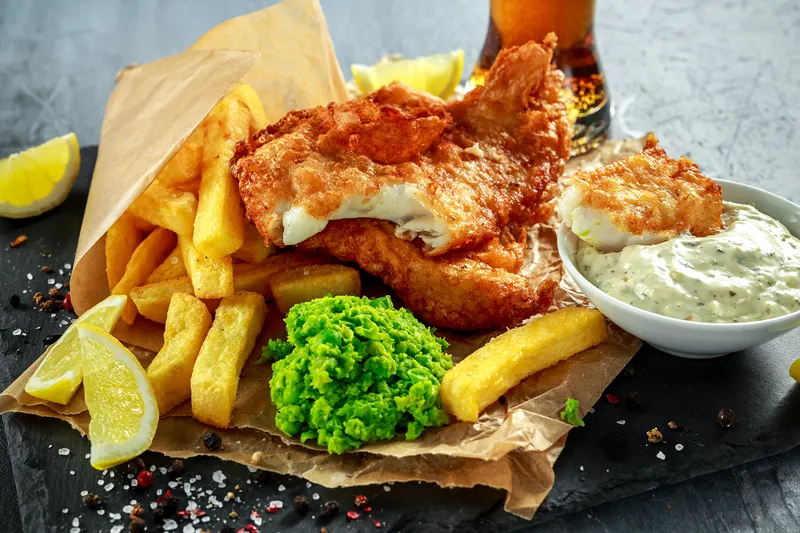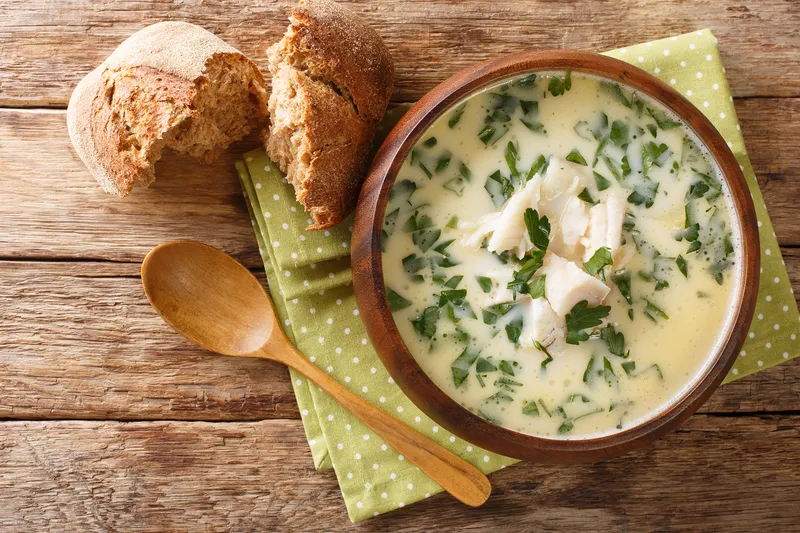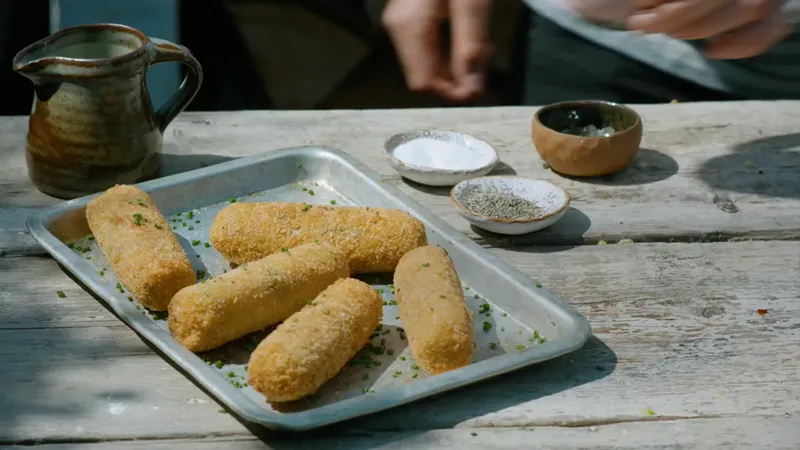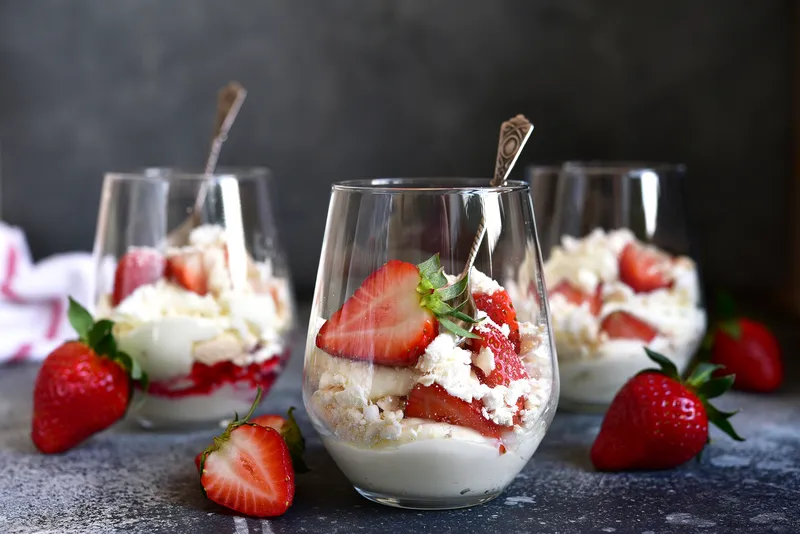Food for thought: 7 foods named after places in Britain
Travelling to the UK this autumn? Don’t miss these iconic foods that are synonymous with the places they originated from.
Britain may not be traditionally celebrated for its culinary inventions, but there’s no denying that the island nation has given quite a few signature recipes to the world. Think fish and chips, Sunday roast, bangers and mash, black pudding, shepherd's pie, beef-and-kidney pie, and trifle!
England, Scotland, and Wales—the three countries that make up Britain—have their own rich history and eclectic culture. Not surprising then that the food the Brits eat is an amalgam representing the history and geography of the three countries.
Claire Dillon, who runs ‘Eat like a Local’ food tours in London, says the roots of British cuisine go back to the Roman Empire.
“Roman settlers introduced new ingredients and cooking techniques, and the Vikings, Normans, and other European cultures further shaped British food traditions over the next few centuries,” she says.
The legacy of these ancient influences continues to be seen in traditional British dishes even today—from hearty stews and roasts that were a staple at mediaeval feasts to the unique blends of herbs and spices that were brought in by invaders.

The pairing of fish and chips, with mashed peas on the side, has long been considered a British staple.
Panikos Panayi writes in The Multicultural History of British Food that, among the cuisines of Europe, Britain’s has long been regarded as the black sheep.
“Kippers, jellied eels, and blood pudding rarely elicit the same fond feelings as chocolate mousse or pasta primavera. Despite these unsavoury stereotypes, British cuisine is anything but unremarkable,” says Panayi.
Apart from the mainstays, British cuisine also includes a few dishes—sides and sweet treats—whose names are derived from the towns or villages where they originated from. These quirky food items, now on must-get lists for travellers visiting these places, offer a slice of Britain’s rich history.
Here are some iconic foods that are synonymous with the places they originated from:
Yorkshire pudding
Still a staple of the British Sunday lunch, Yorkshire pudding was named by Hannah Glasse, who wrote the bestselling cookbook The Art of Cookery Made Plain and Simple in 1747. Before that, it was known as ‘batter’ or ‘dripping pudding’—as it was originally cooked in northern England over a fire with the meat roasting above it; so fats and juices from the meat dripped in to provide flavour and colour. The light, crispy and savoury pudding served as an appetiser to the main meal in olden times and was eaten with gravy.
“The idea was that you would be half-full by the time meat, the much more expensive course, rolled around,” says Dillon.
Made from flour, eggs, and milk, Yorkshire puddings are “similar to Dutch baby pancakes and American popovers”.
Things to do in Yorkshire: Explore the city of York; take a cruise on Ouse River; ride the Keighley and Worth Valley Railway; visit the Yorkshire Sculpture Triangle.
Caerphilly cheese

Every year, Caerphilly celebrates its cheese with a festival. This year, the cheese fest will be held on August 31 and September 1. Photo: Visit Wales
Caerphilly cheese, a moist curd-like, crumbly white cheese, was originally made in farms around the town of Caerphilly in Wales from about 1830. It is thought to have been created to provide food and sustenance for the local coal miners, a job it did well as it had the salt content they needed and did not dry up when taken underground.
The decline in production of cheese in Caerphilly began in World War II as cheddar became the British cheese of choice because it could be kept for longer. Since then, the majority of Caerphilly cheese is produced in Somerset and Wiltshire.
“Caerphilly cheese is grated and melted into dishes; it is best enjoyed on a cheese board and paired with light-bodied reds and crisp white wines,” says Sian Roberts, Founder of Cardiff-based food tour company Loving Welsh Food.
Things to do in Caerphilly: Explore Caerphilly Castle, the second largest castle in the UK; go back in time at Llancaiach Fawr Manor House; visit Aber Valley Heritage Museum.
Cullen skink

Cullen skink is a hearty smoked haddock chowder, full of fresh, flaky fish. Photo: Shutterstock
Cullen, a village and former royal burgh in Moray, Scotland, since the 17th century, became the birthplace of a hearty Scottish soup, the Cullen skink, on the back of its fishing heritage.
Made of smoked haddock, potatoes and onions, it is said to be smokier and more assertive than American chowder and heartier than classical French bisque. The local speciality typically uses finnan haddie, named after Findon, Scotland, a fishing village near Aberdeen, but any other smoked haddock can also be tossed into the pot.
“A part of life in Scotland, it works as dinner with crusty bread or as a starter at formal events. Whatever the weather is like in the Highlands, this flavourful broth goes down a treat!” Dillon says.
Things to do in Cullen: Get a look at a model of the Old Town at the Heritage Centre; pray at the Auld Kirk, a 13th century church; try the wood-fired Sauna at the Kings on the beach
Glamorgan sausage

The flavourful Glamorgan sausages are a meat-free Welsh favourite. Photo: Visit Wales
Named after the historic county of Glamorgan in Wales, this traditional Welsh sausage is vegetarian. It could well be the world’s first mock meat alternative!
Glamorgan sausage was first mentioned in Wild Wales: Its People, Language and Scenery, a Victorian travelogue, and it became popular during World War II when meat was tough to come by.
“This alternative was dished up using Caerphilly cheese, leeks and egg as a binding agent. Coated in breadcrumbs, the sausages are fried or baked for a crisp coat and soft inside,” says Roberts.
Modern recipes replace the leeks with onions, add herbs and spices, and use varied kinds of cheese. They’re best eaten with creamed potatoes or chips, according to Croeso Cymreig, a popular Welsh cookbook.
Things to do in Glamorgan: Walk the 50-mile Wales Coast Path or explore the shorter Vale Trails; go wine tasting at Llanerch Vineyard or Glyndwr Vineyard; picnic at Barry Island.
Bakewell tart

The Bakewell tart is often served with a dollop of cream or warm custard. Photo: Borough Market
The foundation of the Bakewell tart was laid in the 19th century when the landlady of the White Horse Inn in Derbyshire serendipitously created the Bakewell pudding. Instead of adding almond paste and jam into the pastry, her cook spread the mixture on top. The ‘mistake’ made it to Eliza Acton’s 1845 cookbook, Modern Cookery for Private Families.
In the early 1900s, the pudding evolved into the tart, with a crisp and buttery shortbread crust, cherry jam, and a layer of almond frangipane, a sweet flavoured custard.
“A variant known as the Cherry Bakewell swaps the frangipane with almond-flavoured fondant and a single half glacé cherry,” says Dillon.
Things to do in Bakewell: Explore Bakewell Parish Church and Old House Museum; head to the stunning Chatsworth House; picnic by the riverside
Bath bun

Author Jane Austen loved Bath buns, sprinkled with caraway seeds and sugar. Photo: Visit Britain
The home of Bridgerton and Jane Austen, Bath is also renowned for its sweet, enriched yeast dough buns. The original recipe, which dates to the 18th century, used a brioche or rich egg-and-butter dough, sprinkled generously with caraway seeds and sugar. It is said to have been created by a doctor, William Oliver, to provide nourishment to his rheumatic patients.
The recipe soon caught on, and Jane Austen, in a letter in 1801, wrote about “disordering my stomach with Bath Buns". Its popularity soon spread, as is evidenced by W Chambers’s entry in his Edinburgh Journal of 1855: “The Bath bun is a sturdy and gorgeous usurper – a new potentiate, whose blandishments have won away a great many children, we regret to say, from their lawful allegiance to the plum bun.”
It’s also said to have inspired the famed Sally Lunn bun—a claim that the teashop refutes.
Things to do in Bath: Enjoy the Georgian architecture; explore the Roman Baths; take the Bath Abbey Tower Tour; visit the Jane Austen Centre
Eton mess

The no-bake Eton mess is a deliciously messy mix of berries, whipped cream, and meringue. Photo: Shutterstock
Eton College may be renowned the world over as ‘the nurse of England’s statesmen’, but the boarding school located in Berkshire is also known for a sweet culinary creation.
The traditional Eton mess comprises a mix of chopped strawberries, broken pieces of meringue, and whipped cream. Chopped bananas and other pieces of soft fruit are often tossed in.
“Local lore goes that a pudding was dropped at an Eton v Harrow cricket match in the 1920s; rather than binning it, it was served, smashed, in bowls. Another story goes that an overexcited Labrador sat on a strawberry pavlova placed in a picnic basket as an after-match treat for schoolboys. The boys didn’t mind the squashed version, and a new dessert was born,” says Dillon.
By the 1930s, the sweet treat was so popular that it was served at the Eton tuck shop.
Things to do in Eton: Explore history at Windsor Castle; Visit Eton Museum of Antiquities; cruise down the Thames River
Edited by Swetha Kannan







